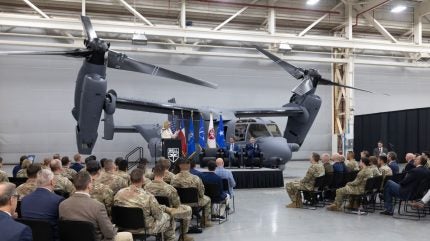
Bell Textron and Boeing have disclosed that they are approaching the final stages of assembling the last CV-22 Osprey tiltrotor aircraft designated for the US Air Force (USAF).
Production will complete in the next few months of 2025, prior to its delivery to the service.
Bell V-22 programme director Eldon Metzger said: “Completing the CV-22 production aircraft for the U.S. Air Force is an immense honour and testament to the amazing men and women who have worked to design, engineer, and build these incredible aircraft.
“As we reach this milestone of CV-22 production we embark on the next chapter of our journey as we transition from full-rate production to fleet wide sustainment.”
The USAF is the first among US military branches to operate the V-22 Osprey equipped with enhanced nacelles and to fulfil its planned quota for newly constructed aircraft.
The V-22 is said to be the inaugural tiltrotor aircraft incorporated into military operations. It is designed to deliver speed, range, and versatility across diverse terrains.

US Tariffs are shifting - will you react or anticipate?
Don’t let policy changes catch you off guard. Stay proactive with real-time data and expert analysis.
By GlobalDataThe Air Force’s Osprey variant is designed for special operations missions.
The CV-22 can perform tasks that necessitate both fixed-wing and rotary-wing aircraft.
It features vertical take-off capabilities, and once in flight, the nacelles (which house the engine and prop-rotor assembly) on each wing can pivot to a forward-facing position.
Additionally, the CV-22 is outfitted with a range of systems designed to facilitate operations in diverse and austere conditions.
Boeing Defense, Space & Security Vertical Lift vice president and general manager Kathleen Jolivette said: “The CV-22 Osprey represents the dedication and determination of all those who had a hand in creating a unique aircraft and capability for the US Air Force.
“We are proud of all the work that has gone into the programme over the years and look forward to maintaining the CV-22 for decades to come in support of its mission critical operations.”
Meanwhile, Bell Textron and Boeing will continue manufacturing new MV-22 and CMV-22 variants for the US Marine Corps and the Navy, respectively.



